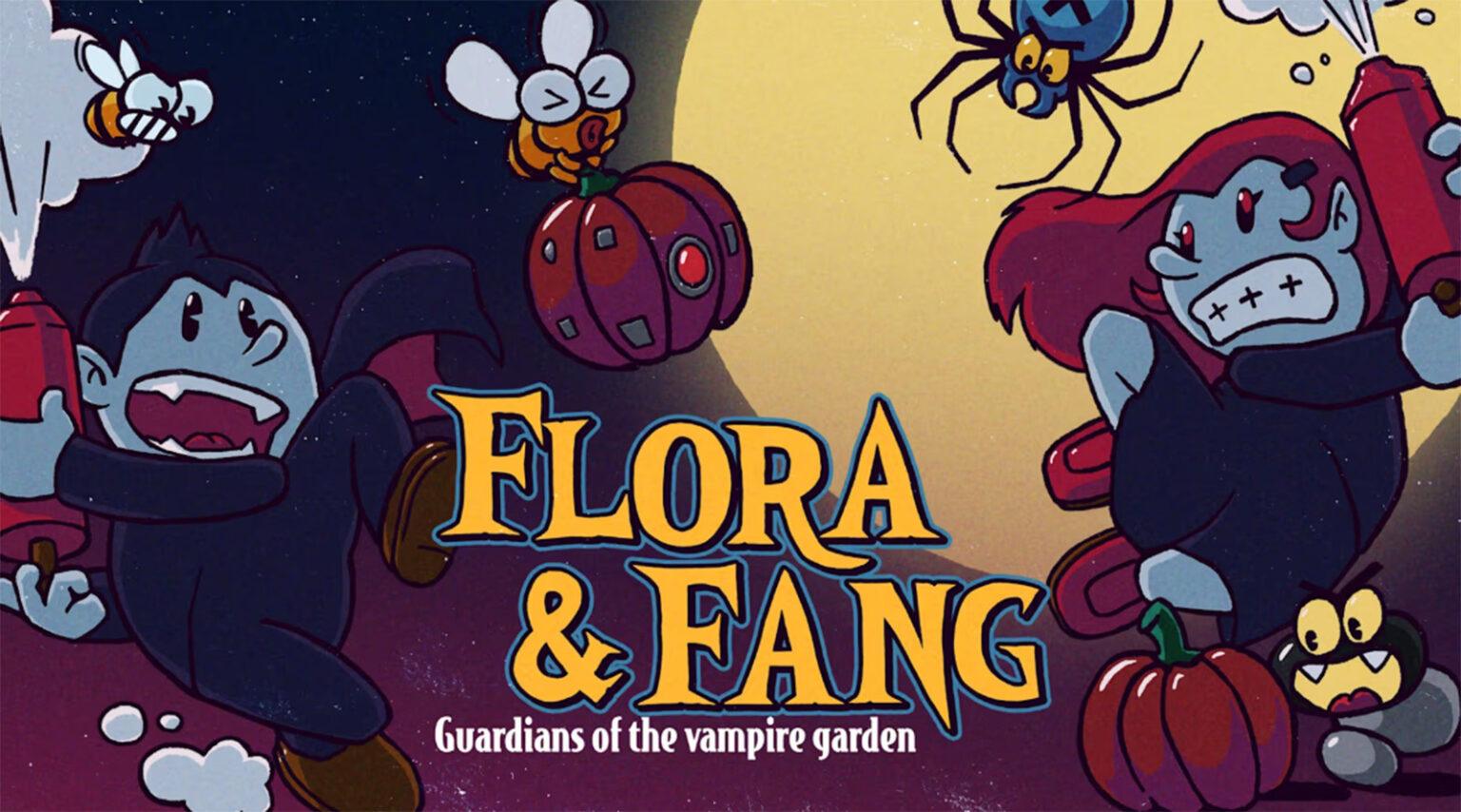What if your dad is Count Dracula and, of all things, he’s taken up gardening? Whenever he’s off on his nightly vampire errands, his kids, Flora and Fang, stay behind to defend his precious crops. Between swarms of bees and waves of pests, the siblings must work together on platforms to keep every pumpkin intact. Like other Flynn’s Arcade titles, an unlikely premise is turned into a focused single-screen platform puzzler. Flora and Fang: Guardians of the Vampire Garden arrives on Nintendo Switch July 10.
That sounds familiar
Anyone who’s played other Flynn’s Arcade titles before and liked them, will feel right at home. It uses the pixel-art, late-1980s single-screen puzzle-action formula that’s worked well for them recently. We’ve covered Murtop and Freddy Farmer on Retrolike.net and tried Goliath Depot and Donut Dodo in our ow, they all built on the same principals.
Gardening is therapeutic
Count Dracula is an avid botanist, perhaps to take his mind off all the bloodsucking and murdering. His children, Flora and Fang, must defend pumpkins from pests and swarms of bees that terrorize the garden while Dad is out “prolonging his immortality.” That’s no small task: if the siblings lose all their pumpkins, they’ll have to tell Dad his precious crops are gone. The bees and spiders can hoist away your pumpkins, while later on, fire spouting spiders can roast pumpkins to a smoldering pulp.

Pump it up
Thankfully you’ve got a heroic tool at your disposal; an insecticide spray pump. Three pumps stun critters, turning the game into a Bubble Bobble–style pop-’em-up: stunned pests float in balloons, and popping multiple bubble at once creates chain reactions. Clear all insects to finish the stage, preferably with all, but at least one pumpkin intact. As you progress further you eventually get the chance to purchase traps and upgrade your gear. The traps add a significant strategic layer to the game and it does change up your approach quite a bit. Being able to secure one corner of the stage gives you more time to manoeuvre and focus on other pumpkins.
It’s a me!
The stage setups and pump mechanic screams Donkey Kong 3. The basic pest control methods look nearly identical but the pacing of Flora and Fang is much more subtle than frantic. Flora and Fang adds quite a lot of gameplay features to the mix as well. While DK3 is high paced, this game focuses much more on strategic ways to control the waves of insect attacks. The game introduces new pests every couple of levels to force you to keep adapting. You start out fighting spiders and bees, but as you progress more creatures turn up like beetles, butterflies, worms and mosquitoes. They can be either interested in stealing or destroying the pumpkins or in destroying you. One of the more interesting features is your ability to move the pumpkins around the stage. Strategically, you should bring the pumpkins together in one place to make your defence easier.

This whole procedure can be mildly infuriating, especially when the pumpkin sits on the bottom level of the stage. You need to kill the flames from below but, as you might guess, there is no way to attack from underneath. Your only option is to watch the pumpkin burn. There is a workaround, but it depends too much on luck and random number generation to be reliable. You can either guard the bottom-floor pumpkin at all costs, leaving its side only when immediate danger threatens your other pumpkins, or let a bee carry the pumpkin to another floor and then defeat it. As you can imagine, that strategy requires a lot of factors to align in your favor.

Lord of the darkness
Another gripe is that the dark and broody nature of the game makes all the stages hard to see. The pests are colorful and stick out, but the background suffers from an attempt to give the impression everything is dimly lit. Somehow everything is slightly better to see on my Switch 2’s screen, while the action is sometimes really hard to see on my OLED TV.

Survive until the insects stop coming
The mix of traditional Donkey Kong 3 and Bubble Bobble mechanics works well, and the addition of traps and purchasable power-ups gives Flora and Fang a sense of progression that moves it beyond a strictly arcade game, into a more durable, console-friendly experience. Still, I would have preferred a score-based arcade focus. The difficulty and frequent quick hits keep you from finding that arcade flow of clearing stage after stage when you’re “in the zone.” This game is more about survival, and that’s the aspect I’m not really loving. Stages can drag on quite long, and it’s missing a solid win condition other than “survive until the insects stop coming.”
Your playthrough offers plenty of content, but the progression feels slow in several respects. It gets hectic eventually, but early on you spend a lot of time waiting for the bugs to arrive one by one. It takes a while to build momentum.
Flora and Fang is an adorable little single-screen action platformer with a fun premise. It combines two classic arcade game formulas in smart ways and adds neat features that keep the gameplay engaging. However, levels tend to drag on, and the game often feels like it’s setting you up to lose your hearts. Flora and Fang is an enjoyable experience, but it just misses the snappiness that made its inspirations so compelling.
The Good
- Lovely premise
- Cute and nicely detailed pixel art
- Fun powerups and traps
- Quite a bit of content
The Bad
- Stages drag on too much
- Slow stage and overall game progression


